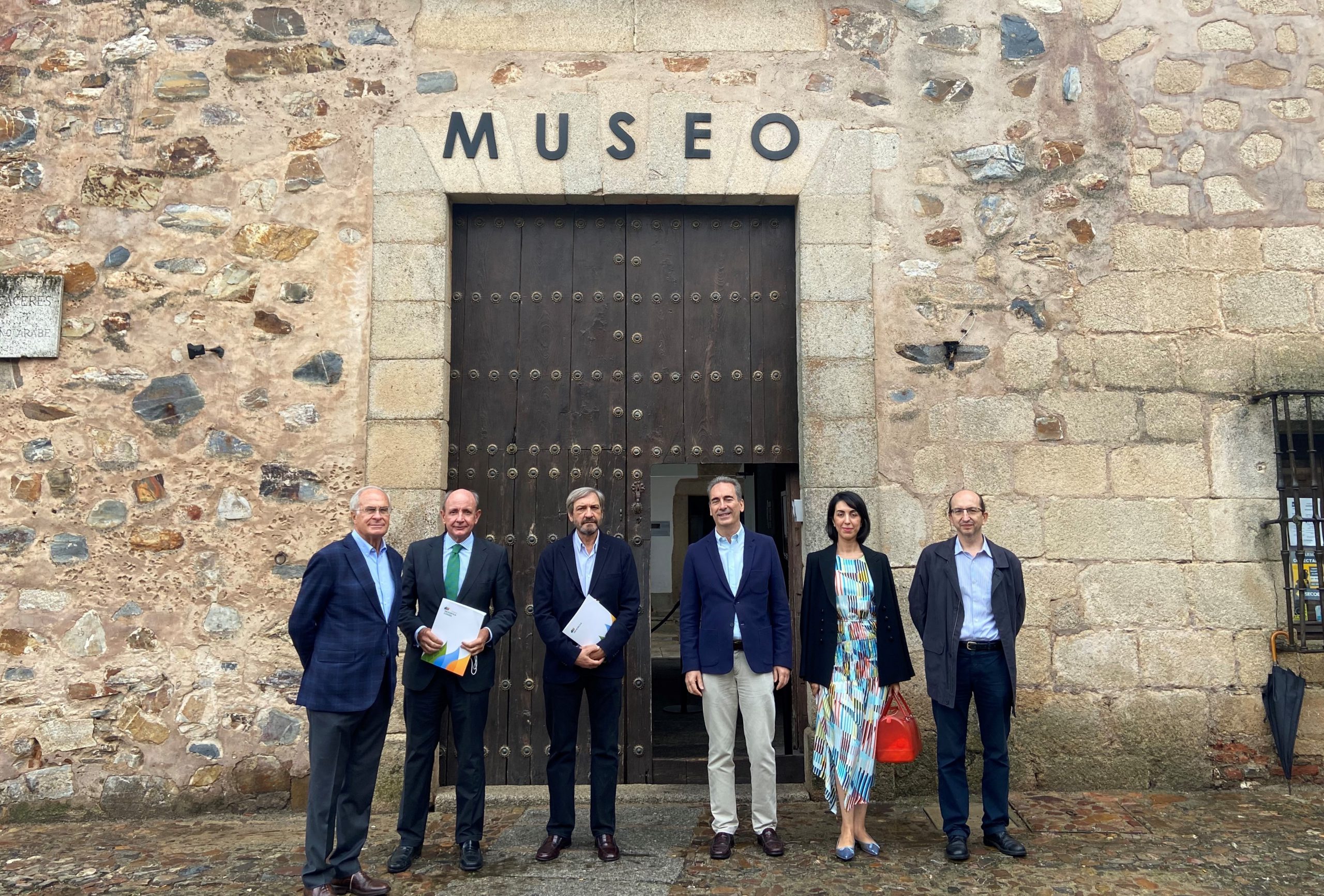Fundación Iberdrola España signs the transfer of drawings of the Alcántara Roman bridge for an exhibition organized by the Junta de Extremadura
- This assignment aims for the exhibition to be organized by the Royal Academy of Letters and Arts of Extremadura, and the Ministry of Culture, Tourism, and Sports of la Junta de Extremadura.
- The exhibition will show plans, engravings, and historical photographs of the Alcántara Bridge, as well as several models and archaeological pieces.
Cáceres, October 20th, 2021
On September 23rd, the Fundación Iberdrola España signed the transfer of the drawings of the Roman Bridge of Alcántara made by Alejandro Millán.
The purpose of this transfer is the exhibition being organized by the Real Academia de Extremadura de las Letras y las Artes and the Consejería de Cultura, Turismo y Deportes de la Junta de Extremadura.
José Javier Cano, director of the Center for Conservation and Restoration of Cultural Heritage of the Junta de Extremadura, and Ramón Castresana, director of Fundación Iberdrola España, signed the transfer this morning in a ceremony that was also attended by José Luis Bernal, Dean of the Faculty of Philosophy and Letters of the University of Extremadura; Juan Manuel Valadés, Director of the Museum of Cáceres; Nuria María Franco, Senior Art Technician at the Center for Conservation and Restoration of Cultural Heritage of the Junta de Extremadura; and Jesús Medina, Trustee of Fundación Iberdrola España.
The exhibition will take place in different venues in the province of Cáceres in the coming months. In addition, training and scientific dissemination activities are planned with the participation of historians, engineers, and other cultural heritage experts with the collaboration of the University of Extremadura.
The exhibition will show plans, engravings, and historical photographs of the Alcántara Bridge and its successive reconstructions, as well as several models and archaeological pieces lent by different public and private institutions, all related to one of the best engineering works of the Roman Empire.
Specifically, Fundación Iberdrola España has lent the exhibition the plans by Alejandro Millán (19th century) called: Arch of Trajan, Shoring, Chains, Crane, Footbridge, Water Winch, Summary of accounts, Bridge upstream, and Bridge downstream, which were used for its restoration between 1856-1859.
The Alcántara Roman Bridge
The Alcántara Bridge was completed around the year 104, but the precise date of the beginning of its construction is still uncertain. It was declared a National Monument in 1924, and an Asset of Cultural Interest in 2015. Despite being almost two thousand years old, it is preserved in great shape. It is a unique work with 71 meters high and 194 meters long.
Its location has made it a strategic enclave over the centuries, saving the bed of the Tagus River and being part of one of the roads that communicate Spain with Portugal.
Due to the bridge, this town became the headquarters of the Orden de Caballería de Alcántara, whose building was the San Benito Convent, built in the 16th century. It was acquired and restored by Iberdrola and is currently preserved and managed by Fundación Iberdrola España. The convent hosts frequent cultural activities and the Alcántara Classical Theater Festival is held in its outdoor gallery.
Iberdrola with the promotion of art and culture
One of Iberdrola’s main areas of action, through its Foundation in Spain, focuses on the care, preservation, and enhancement of historical and artistic riches. The main objective of the Lighting Program is to develop interventions in remarkable buildings to install or improve their interior and/or exterior ornamental lighting systems in order to contribute to the enhancement of heritage.
Since 2011, the volume of investment allocated to the Lighting Program has amounted to more than 3 million euros and has led to the improvement of more than 40 monuments in Spain, among which, in addition to the Alcántara Roman Bridge in Cáceres, the façade of the Congress of Deputies, the Cathedral of Ávila, the interior of the New Cathedral of Salamanca, and the Cathedral of Santiago de Compostela stand out.


